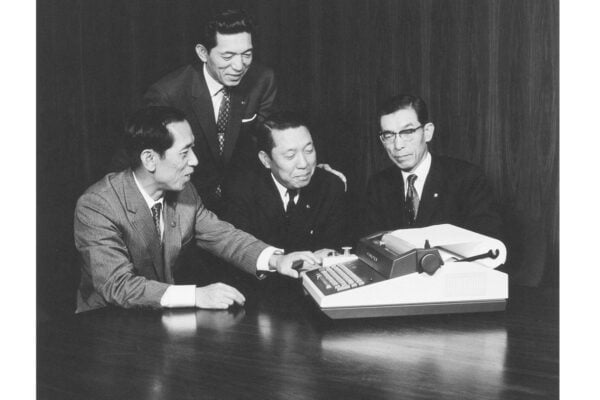What makes the Casio fx-CG50 such an effective tool for maths exams?

As schools gradually move onto an exam footing over the coming months, your thoughts may well turn to how you can increase the chances of success for your A-level and GCSE maths students.
There’s no doubt that, used in the right way, calculators can be a hugely useful tool in this regard.
To get some clearer insights into the practical applications and benefits of calculators, we asked mathematician Simon May for his thoughts on how the fx-CG50, our most advanced graphic calculator, can help students in exams.
One of the best things about maths…
Simon told us that one of his favourite things about maths is that there is often more than one approach to solving problems, which allows connections to be made between different areas of study.
This is particularly evident when you’re using a multifunctional device like the fx-CG50, which lets students take numerical and algebraic approaches to exam questions, but also unlocks the more visually engaging realm of graphing.
An example that clearly illustrates this is simultaneous equations. Students always have the option to tackle these problems algebraically, but with graphing functionality they can visualise the equations and investigate where the two lines cross, or where a line and a curve cross.

Students who aren’t hugely confident with algebra could be particularly daunted by exam questions involving equations that contain fractions. If they’re aware of the fx-CG50’s functionality and know how to access it, they could use SolveN to solve the equation and avoid having to rearrange the various elements.

“A calculator like the fx-CG50 just gives you more options in an exam,” Simon said. “But of course it all relies on teachers and students being aware of the functionality, which means you have to have used the handset consistently and built your confidence with it.”
Advantages for all abilities
The fx-CG50 is a powerful tool for higher-ability students, giving them the functions they need to work quickly, check their working and also to venture into more advanced elements of A-level maths and further maths, such as vectors and 3D graphing.
However, Simon was keen to stress that advanced calculators are not only for top-tier students. In fact, those who find some parts of the curriculum difficult could benefit even more from being able to confidently use a calculator, because they can gain support and reassurance in areas where they might doubt themselves.
“The calculator can really help students who struggle with certain things. If you can do the basics yourself, it can confirm your working – when you’re solving equations, for example,” he said.
“And if you know how to draw and visualise things on the handset, it really helps to improve and strengthen your understanding.”
A stronger grasp of tricky topics
Building on the point of how drawing mathematical concepts can boost understanding in an exam scenario, Simon offered the example of a cubic function such as x3 + 2x2 + 1.
When graphed, this has the standard S shape of a cubic, demonstrating the positive coefficient of x3 and providing clear visual prompts for calculations such as identifying the stationary points on the graph.
Parametric equations serve as another good example of the benefits of graphing, with students having the ability to sketch the equation of a circle and also draw tangents.

If they’re asked to differentiate , the graph will present the values they need in terms of dX/dT and dY/dT. Dividing one of these by the other will give the final value dY/dX, which is also shown.
It’s possible that students who haven’t dedicated a good amount of time to learning the functionality of the fx-CG50 might not even be aware that it’s possible to sketch tangents to functions.
The more familiar and comfortable they are with the calculator, the more they will benefit in an exam scenario.
Preparing to get the best out of the fx-CG50
Simon was keen to emphasise that the fx-CG50 – and indeed any calculator – is simply a tool, and it will only help students if they know how to use it.
Picking up a handset shortly before an exam, not putting in the time required to really learn it and hoping that it will come to their rescue during the paper is unlikely to work out very well for students.
When it comes to the amount of time required to fully get to grips with a device like the fx-CG50, Simon’s recommendation for A-level maths students was to pick it up at the start of year 12 and to use it in every lesson.
Consistent practice over the course of 18 months will stand them in good stead to gain maximum advantage from the handset in their exams.
Of course, there’s nothing to stop high-flying students from starting to use the fx-CG50 during their GCSEs. Indeed, Simon said this is an excellent idea for top-tier students, because it will help them perform better in their GCSE exams and also prepare them for A-level.
If you’re interested in introducing graphing technology to your students but don’t feel particularly confident with it yourself, the best starting point is to sign up for some introductory training.
We offer free, expert-led training sessions that give an overview of what the fx-CG50 can do and demonstrate its functionality in relation to an A-level exam question.



